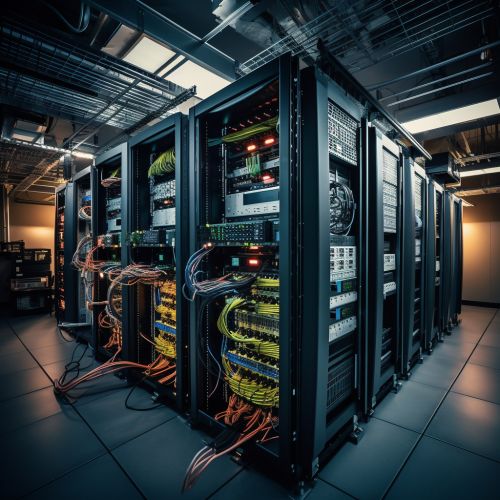Infrastructure Management
Overview
Infrastructure management (IM) is a specialized discipline within the broader field of IT management, focusing on the management of essential operational components of an organization's IT services. These components typically include hardware, software, networks, and data centers, among others. IM is a critical aspect of most IT-dependent organizations, as it ensures the efficient and effective operation of various IT resources.
History
The concept of infrastructure management emerged in the late 20th century, in response to the growing complexity and importance of IT systems in business operations. As businesses increasingly relied on IT for their operations, the need for a specialized discipline to manage and maintain these systems became apparent. This led to the development of IM as a distinct field within IT management.
Importance of Infrastructure Management
Infrastructure management plays a crucial role in ensuring the smooth functioning of an organization's IT services. It helps in maintaining the organization's IT infrastructure in a cost-effective and efficient manner, thereby ensuring that the organization can deliver its services effectively. IM also plays a significant role in strategic planning, as it helps organizations align their IT infrastructure with their business objectives.
Components of Infrastructure Management
Infrastructure management typically involves the management of several key components:
Hardware Management


Hardware management involves managing the physical components of an organization's IT infrastructure. This includes servers, computers, routers, switches, and other physical devices. Hardware management tasks typically include installation, maintenance, upgrades, and disposal of hardware.
Software Management
Software management involves managing the software components of an organization's IT infrastructure. This includes operating systems, databases, applications, and other software. Software management tasks typically include installation, updates, patches, and licensing.
Network Management
Network management involves managing the organization's network infrastructure. This includes routers, switches, firewalls, and other network devices. Network management tasks typically include network design, monitoring, troubleshooting, and security management.
Data Center Management
Data center management involves managing the organization's data centers. This includes servers, storage systems, network devices, and other data center components. Data center management tasks typically include data center design, maintenance, disaster recovery planning, and security management.
Infrastructure Management Processes
Infrastructure management involves several key processes:
Configuration Management
Configuration management involves maintaining an updated and accurate record of all IT infrastructure components and their configurations. This helps in managing changes to the infrastructure and in troubleshooting issues.
Change Management
Change management involves managing changes to the IT infrastructure in a controlled manner. This helps in minimizing the impact of changes on the organization's operations and services.
Incident Management
Incident management involves managing and resolving incidents that affect the IT infrastructure. This helps in minimizing the impact of incidents on the organization's operations and services.
Problem Management
Problem management involves identifying and resolving underlying problems that cause incidents. This helps in preventing the recurrence of incidents.
Service Level Management
Service level management involves managing the service levels provided by the IT infrastructure. This helps in ensuring that the IT infrastructure meets the organization's service level requirements.
Infrastructure Management Tools
There are several tools available for infrastructure management. These tools help in automating various IM tasks, thereby improving efficiency and reducing errors. Some of the popular IM tools include:
- SCCM: A Microsoft product that helps in managing large groups of Windows-based systems.
- Nagios: An open-source tool that provides monitoring and alerting services for servers, switches, applications, and services.
- Ansible: An open-source software provisioning, configuration management, and application-deployment tool.
Challenges in Infrastructure Management
Despite its importance, infrastructure management faces several challenges:
- Complexity: With the increasing complexity of IT infrastructures, managing them effectively is becoming more challenging.
- Cost: Maintaining an IT infrastructure can be costly, especially for small and medium-sized businesses.
- Security: With the increasing number of cyber threats, securing an IT infrastructure is a major challenge.
- Compliance: Ensuring compliance with various regulations is another challenge in infrastructure management.
Future of Infrastructure Management
With the advent of technologies like cloud computing, artificial intelligence, and machine learning, the field of infrastructure management is evolving rapidly. These technologies are expected to automate many IM tasks, thereby reducing the need for human intervention and improving efficiency. However, they also pose new challenges in terms of security and privacy.
